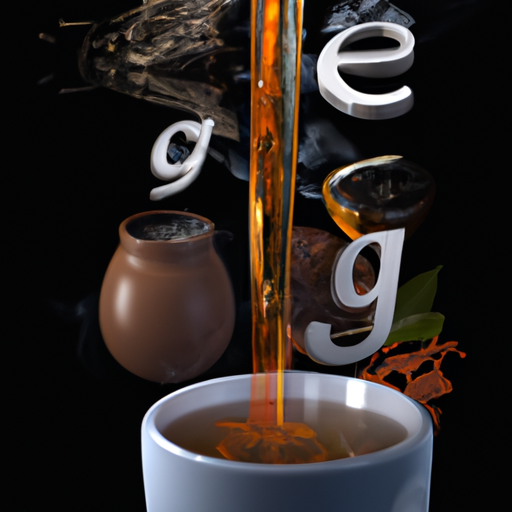The Essence of Tea: An Exploration into the Art of Tea Aromas
As tea lovers, we know that tea is more than just a drink. It's an experience that includes not only taste, but also the aroma. So, let's stir things up and delve into the world of tea aromas – it's time to sniff out the truth behind the captivating scents our beloved leaves exude.
From earthy Pu'erh to delicate white tea, the vast array of teas emerge with unique aromas that offer insights into the character, complexity, and quality of our favorite beverages. Pour yourself a cup and join us on an aromatic adventure as we explore the factors that contribute to the scent profile of tea, the different aroma categories that exist, and the ways in which we can train our noses to become tea aroma connoisseurs.
Factors Influencing Tea Aroma
Each type of tea originates from the same plant, Camellia sinensis; however true tea lovers know that a world of difference can exist between the aromas of two seemingly similar teas. Various factors, such as terroir, processing methods, and even storage conditions, help create the diverse aroma profiles of tea that we can detect through our olfactory senses.
Terroir
Terroir refers to the distinctive set of environmental factors, such as geography, climate, and soil composition, that influence agricultural crops, including tea bushes. It's the reason why tea bushes cultivated in differing regions can produce tea leaves with unique aroma and flavor characteristics. From high-altitude Darjeeling tea in India to the volcanic soil-growing tea bushes in Japan, terroir contributes significantly to the tea's final aroma profile.
Processing Methods
Each type of tea undergoes a series of processing steps that determine its ultimate character. Green tea, for example, undergoes minimal oxidation and is typically either steamed or pan-fired to lock in its natural aromas, while black tea is fully oxidized, resulting in bold, robust scents. The techniques used during processing, such as shaping or the addition of fragrant flowers or herbs, further contribute to the tea's aroma.
Storage Conditions
Properly storing tea is crucial to preserving its original fragrance. Exposure to light, heat, moisture, and even strong odors can degrade tea and alter its aroma. Tea enthusiasts often opt for opaque, airtight containers to protect their precious leaves against environmental threats.
Tea Aroma Categories
Tea aromas can be broadly categorized as either natural or developed. Natural aromas are inherent to the tea leaf and a result of its unique terroir and processing methods. Developed scents, on the other hand, are introduced through the addition of other ingredients, such as flowers or spices, during the processing stage.
To further understand the myriad of tea aromas, we can divide them into six primary categories. These classifications can differ greatly and are influenced by both the natural characteristics of the tea leaf and external factors during processing.
- Floral: Evident in many green and oolong teas, as well as jasmine-infused tea
- Fruity: Present in partially oxidized teas, such as white and oolong teas
- Vegetal: Linked to green teas but can be noticed in other varieties as well
- Spice and Herbaceous: Often found in chai blends or teas blended with herbs and spices
- Earthy: Associated with aged and fermented teas, like Pu'erh
- Sweet and Malty: Typical in fully oxidized teas, such as black tea
Training Your Nose: Steps to Hone Your Tea Aroma Appreciation Skills
Developing your ability to discern and appreciate tea aromas takes practice but is a rewarding skill for the tea aficionado. The following steps will help you enhance your olfactory senses when it comes to the art of tea appreciation.
Step 1: Choose the Right Tea
Select a tea known for its distinctive aroma to begin your journey into tea aroma appreciation. Loose-leaf tea is preferred over tea bags, as it tends to offer a more nuanced and complex aroma experience.
Step 2: Proper Brewing
Follow the recommended brewing instructions for the specific tea you have selected. Using the right water temperature and brewing time will ensure the proper extraction of fragrant compounds from the leaves, optimizing the aroma experience.
Step 3: Engage Your Sense of Smell
Carefully waft the tea's aroma toward your nose, taking in the scent deeply and focusing on the various scent notes. Note any similarities or differences between the dry leaf, the wet leaf post-brewing, and the tea liquor itself.
Step 4: Develop a Tea Aroma Lexicon
To better articulate and understand the fragrances you detect, create a personal tea aroma lexicon. This lexicon can be crafted using terminology from the primary aroma categories or by devising unique descriptors that resonate with you.
Step 5: Expand Your Tea Horizons
Practice makes perfect, and there's no better way to hone your tea aroma appreciation skills than by exploring a vast array of teas. Challenge yourself by sampling a wide variety of teas and noting the differences or similarities in their aroma profiles.
In the world of tea, the aromas produced by our beloved leaves provide us with a sensory experience that transcends mere taste. Through understanding and recognizing the various factors that influence tea aromas and by practicing our own tea aroma appreciation skills, we can further elevate our tea experiences and appreciation.
As you continue expanding your tea aroma lexicon, don't forget to share your discoveries and findings with fellow tea enthusiasts. You can do so by leaving a comment below or participating in our discussion area. After all, in the alluring realm of tea aromas, the more, the merrier.
